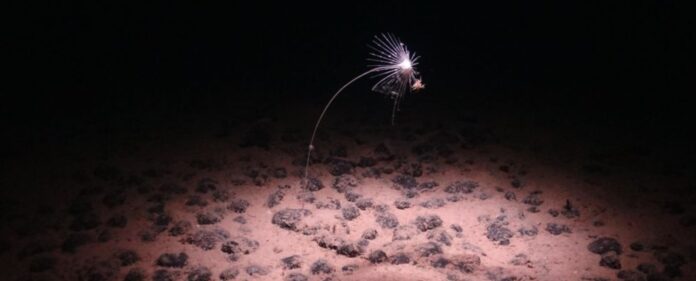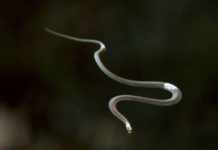By Jessica Park
While technology has enhanced our ability to explore the ocean, scientists continually uncover new discoveries from its profound depths. Recent studies have revealed an invisible line that delineates two distinct types of marine life. Moreover, this research has illuminated unique ecosystems that exist beneath the ocean’s surface, presenting a stark contrast to the more familiar ecosystems found in the upper layers of the ocean.
The abyssal ocean, which spans from the seafloor and water depths ranging from 3000 to 6500 meters, remains largely unexplored due to extreme environmental conditions. This zone, characterized by freezing temperatures, high pressure, and perpetual darkness, provides significant challenges to our explanation. However, technological advancements have enabled ocean scientists to explore these depths remotely, using deep-sea robots or autonomous vehicles to collect vital data and imagery. These technologies have revealed an invisible line in the ocean’s depths, delineating two types of creatures in the ocean. Beyond a depth of 4,400 meters, the composition and characteristics of marine creatures undergo a dramatic shift.
- Above the invisible line, or beyond a depth of 4,400 meters, the typical hard-shelled mollusks, corals, and others with similar attributes dominate the ecosystem.
- In contrast, below this depth, organisms display soft and squishy bodies, adapted to thrive in the darkness of the abyss.
Dr. Erik Simon-Lledó, a deep-sea ecologist at the UK National Oceanography Center, and his team utilized a robot or robotic technology to gather data and images from the Clarion-Clipperton Zone, spanning 3,100 miles across the Pacific Ocean at depths of 4,000 to 5,000 meters. The researchers cataloged over 50,000 abyssal creatures, noting a lack of animals larger than 10 millimeters below 4,400 meters. They proposed that a chemical gradient affecting the organisms’ ability to produce calcium carbonate delineates a boundary across the abyssal ocean, segregating deep-sea life into distinct communities.
What This Finding Tells Us
The study’s findings have implications for deep-sea mining activities, a topic of growing concern as we grapple with the challenge of balancing economic interests with environmental conservation. Deep-sea mining activities involve extracting valuable minerals and resources from the ocean floor at depths beyond traditional mining operations. As Dr. Erik Simon-Lledó emphasizes, it is crucial to consider this research finding in decision-making processes to ensure the conservation of deep-sea ecosystems.
Questions to Ponder:
- Considering the biodiversity patterns observed in the deep sea, what implications do you think this has for our understanding of ecology and conservation efforts?
- Given the potential threats facing deep-sea ecosystems, such as climate change, deep-sea mining activities, and pollution, what actions do you think we as high school students can take to preserve these vital ecosystems for future generations?










